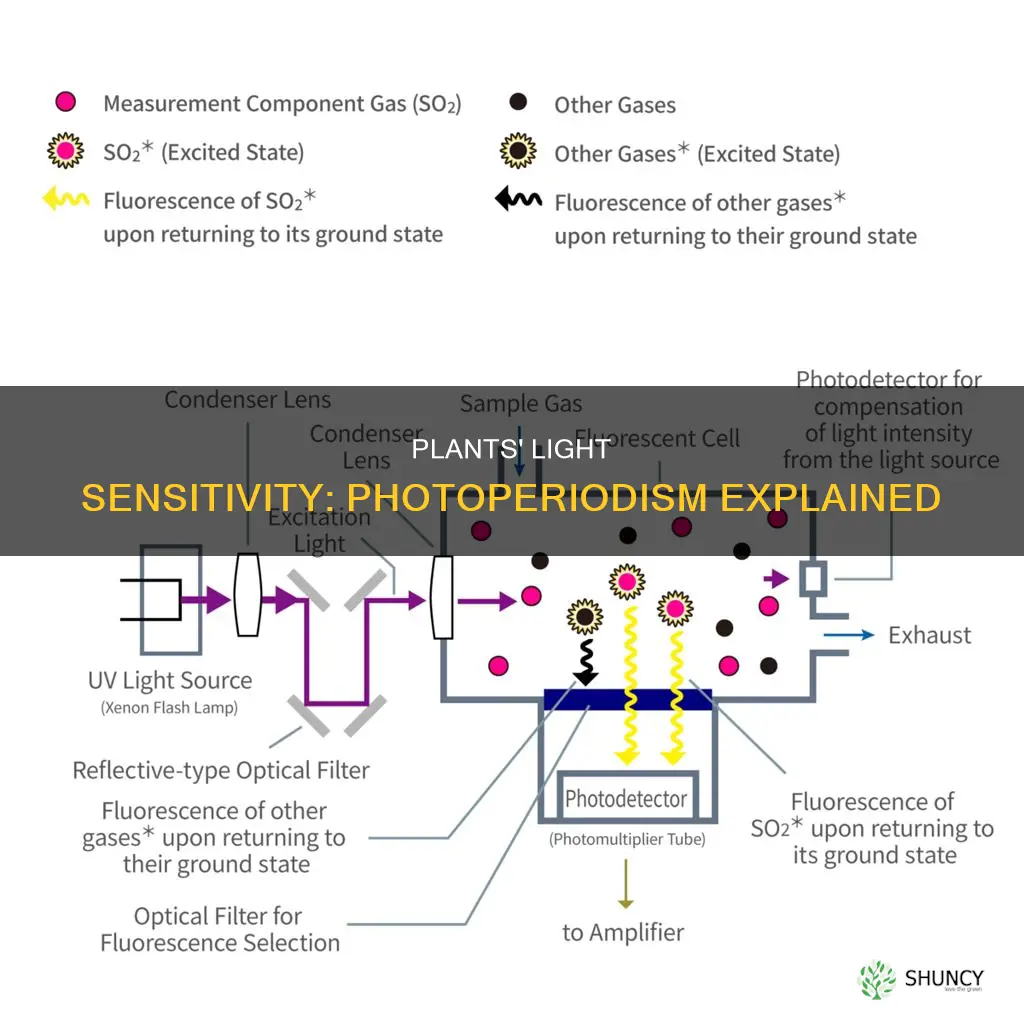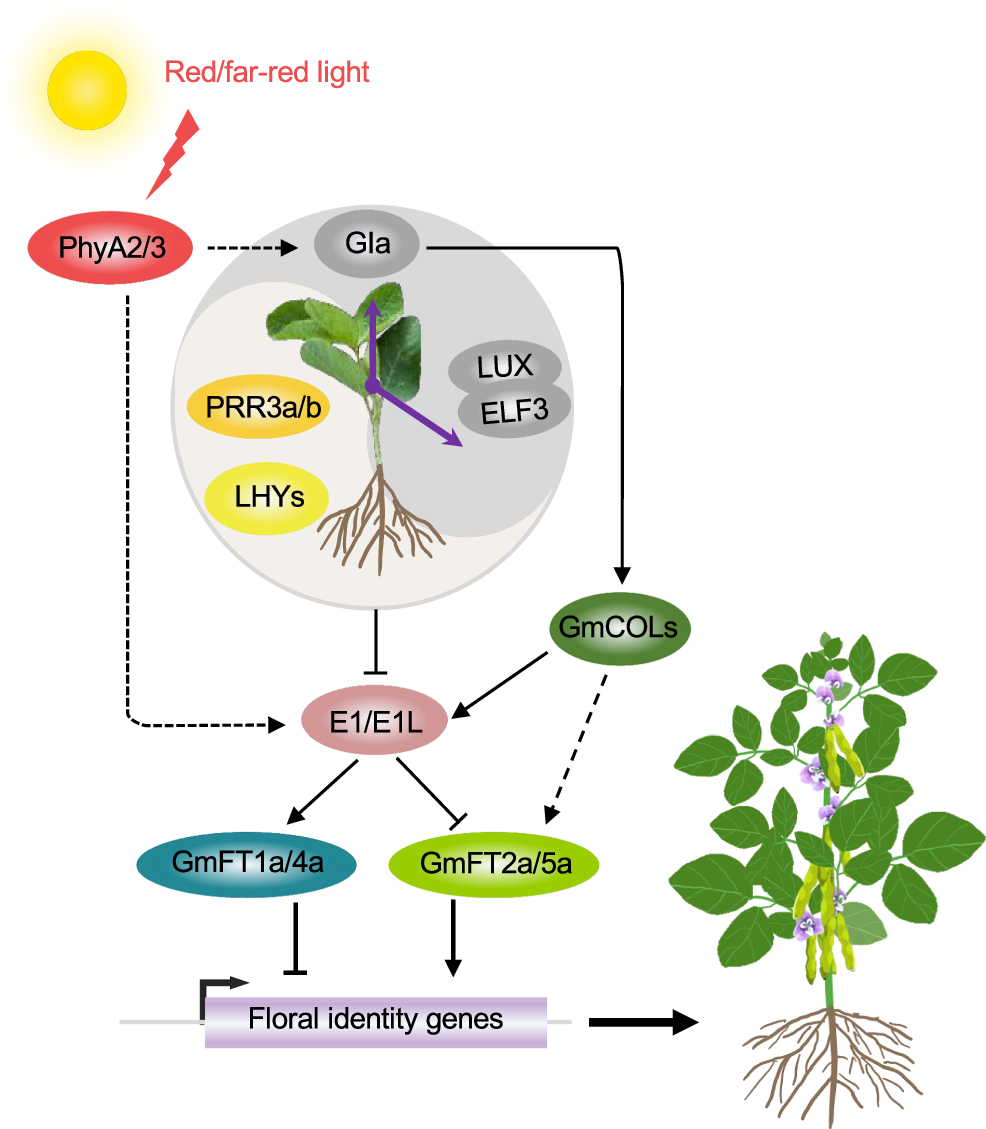Photoperiod Effects on Vegetative and Flowering Stages
Photoperiodism, the physiological reaction of organisms to the length of day or night, plays a crucial role in the growth and development of many plant species. The timing of vegetative growth and flowering stages in plants is often tightly regulated by photoperiod signals, which enable plants to synchronize their life cycles with favorable environmental conditions. Understanding photoperiod effects is vital for agriculture, horticulture, and plant biology research, as it helps optimize crop yields, control flowering times, and manage plant growth.
In this article, we explore the significance of photoperiodism, how it influences vegetative and flowering stages in plants, mechanisms underlying photoperiodic responses, and practical applications.
Introduction to Photoperiodism
Photoperiodism refers to an organism’s biological response to the relative lengths of light and dark periods within a 24-hour cycle. In plants, photoperiod is a key environmental cue that regulates developmental processes such as seed germination, stem elongation, leaf expansion, and especially flowering.
- Short-day plants (SDPs): Flower when day length falls below a critical duration.
- Long-day plants (LDPs): Flower when day length exceeds a critical duration.
- Day-neutral plants: Flowering is largely unaffected by photoperiod.
By responding to specific photoperiods, plants can time their reproductive phase to coincide with optimal environmental conditions for pollination and seed development.
Photoperiod Effects on Vegetative Growth
Vegetative growth encompasses all stages of plant development prior to flowering. This includes germination, leaf production, stem elongation, root development, and overall biomass accumulation. Photoperiod influences these phases by modulating physiological processes such as photosynthesis rate, hormone balance, and resource allocation.
Light Duration and Vegetative Development
Plants utilize light signals not only for photosynthesis but also as environmental information. Longer daylight hours generally promote more photosynthetic activity and thus greater energy availability for growth. However, the effect of photoperiod on vegetative growth varies depending on species and cultivar.
- In some long-day plants, extended day lengths enhance leaf expansion and shoot growth by stimulating cell division and elongation.
- In certain short-day plants, long days may inhibit vegetative growth or induce early transition to flowering.
- Day-neutral plants typically show vegetative growth patterns independent of photoperiod but may still respond to light intensity or quality.
Photoperiod Interaction with Hormones
- Gibberellins are particularly important in promoting stem elongation under long-day conditions in LDPs.
- Changes in cytokinin levels under different photoperiods affect cell division rates.
- Auxin distribution can be influenced by light signaling pathways to modulate leaf morphology.
These hormonal adjustments fine-tune the plant’s architecture according to day length cues.
Molecular Mechanisms During Vegetative Stage
At the molecular level, photoreceptors such as phytochromes (red/far-red light sensors) and cryptochromes (blue light sensors) detect light duration and initiate signaling cascades that regulate gene expression linked to vegetative growth. Key genes involved include those controlling circadian rhythms and light-responsive transcription factors that coordinate developmental timing.
Photoperiod Effects on Flowering Stage
The transition from vegetative growth to flowering—also called floral induction—is one of the most dramatic developmental shifts influenced by photoperiod. Flowering at the appropriate time ensures reproductive success.
Critical Day Length Concept
- For short-day plants, flowering occurs when night length exceeds a critical duration (i.e., days are shorter than a threshold).
- For long-day plants, flowering initiates when night length is less than the critical duration (i.e., days are longer).
The plant perceives uninterrupted darkness rather than light per se; even brief interruptions of the night period with light can inhibit or promote flowering depending on species.
Photoreceptors Involved in Floral Induction
- Phytochromes exist in two interconvertible forms: Pr (absorbs red light) and Pfr (absorbs far-red light). The Pfr form typically promotes flowering in LDPs.
- Cryptochromes detect blue light and modulate circadian clock components involved in timing floral induction.
These receptors regulate downstream gene networks that control production of flowering signals.
The Florigen Concept
- Under inductive photoperiods, FT expression increases in leaves.
- FT protein moves to the meristem where it interacts with other transcription factors like FD to activate floral identity genes.
This molecular pathway effectively links external light cues with internal developmental programs.
Species Examples
- Rice (Oryza sativa): A short-day plant where decreasing day lengths induce expression of genes like Hd3a (FT homolog) leading to floral induction.
- Arabidopsis thaliana: A long-day plant where CONSTANS (CO) protein accumulates under long days stabilizing FT expression.
- Chrysanthemum: Another short-day plant widely used in horticulture; understanding its photoperiodic control allows manipulation of flower timing commercially.
Practical Applications
Understanding photoperiod effects has widespread applications:
Agriculture & Crop Improvement
- Extending day length with supplemental lighting promotes early heading in long-day crops like wheat.
- Controlling dark periods helps induce flowering in short-day crops such as soybeans or tobacco grown out of season.
Breeders develop varieties with altered photoperiod sensitivity suited for diverse climates or growing seasons.
Controlled Environment Agriculture
In greenhouses or vertical farms, artificial lighting schedules mimic natural photoperiods or modify them to accelerate crop cycles. This allows year-round production of vegetables, ornamentals, or medicinal plants by controlling vegetative phase duration and flowering onset precisely.
Horticulture & Ornamentals
Nurseries use lighting techniques like blackout curtains or night interruption lighting to schedule blooms of ornamental crops such as poinsettias or chrysanthemums for holidays or market demand peaks.
Research & Genetic Engineering
Studying genes regulating photoperiod responses enables genetic engineering approaches aimed at producing crops with flexible flowering times adaptable to changing climates or new geographical regions.
Conclusion
Photoperiodism is a fundamental environmental signal that shapes plant life cycles by influencing both vegetative growth phases and floral induction timing. Through complex interactions involving photoreceptors, circadian clocks, hormonal pathways, and mobile signaling molecules like florigen, plants finely tune their development according to day length changes.
Advances in understanding these mechanisms have revolutionized agricultural practices by enabling precise management of crop phenology through altering light environments or breeding new varieties. Continued research into photoperiod effects holds promise for improving food security and sustainable horticulture amid global climate variability.
Related Posts:
Photoperiod
- How to Adjust Photoperiod for Seedling Growth
- How Night Length Changes Influence Plant Dormancy
- Managing Photoperiod Stress in Greenhouse Crops
- Using Photoperiod to Improve Greenhouse Crop Quality
- How Photoperiod Influences Indoor Vegetable Growth
- The Role of Photoperiod in Indoor Gardening
- Photoperiod Techniques to Boost Orchid Blooming
- How to Calculate Photoperiod for Your Geographic Location
- The Science Behind Photoperiod and Plant Hormones
- Identifying Photoperiod Sensitive Plants for Your Garden
- How Artificial Lighting Affects Plant Photoperiodism
- Photoperiod Impact on Perennial Plant Development
- How to Set Photoperiod Timers for Hydroponic Systems
- Photoperiodism Explained: Short Day vs Long Day Plants
- Adjusting Photoperiod for Growing Marijuana Indoors
- Common Mistakes When Adjusting Plant Photoperiod
- Understanding Photoperiod and Its Impact on Plant Growth
- How Night Length Influences Plant Development Cycles
- Managing Photoperiod for Herb Garden Success
- Photoperiod Effects on Bulb Plant Growth Cycles
- Photoperiod Optimization for Indoor Herb Production
- Photoperiod and Cannabis: Optimizing Flowering Time
- How to Measure and Track Photoperiod in Your Garden
- Understanding Photoperiod to Prevent Plant Stretching
- Best Photoperiod Practices for Tomato Plants
- How to Use Photoperiod to Maximize Crop Yield
- Photoperiod Tips for Growing Succulents Indoors
- How to Manipulate Photoperiod for Hydroponic Plants
- Photoperiod Guide for Growing Lettuce Year-Round
- How Photoperiod Affects Fruit Tree Bud Formation
Plants’ Light Sensitivity: Photoperiodism Explained

Photoperiodism is the ability of plants to measure environmental day length (photoperiod) by monitoring night length. This process allows plants to synchronize their physiological decisions with the correct time of the year to maximize growth and produce offspring. Plants have the ability to sense the amount of light and duration of this light, using a light-sensitive receptor known as phytochrome. This allows them to respond appropriately by flowering at suitable times of the year. In addition, plants have mechanisms to measure photoperiod to control hypocotyl elongation and alter the phase of the circadian clock, suggesting that there are a host of photoperiod measurement systems and responses to photoperiod outside of the well-studied photoperiodic flowering system.
| Characteristics | Values |
|---|---|
| Definition | The physiological reaction of plants and animals to the length of light or a dark period |
| Process | Plants measure the photoperiod by monitoring night length |
| Photoreceptors | Phytochromes, Cryptochromes, Phototropins, F-box containing flavin-binding proteins ZEITLUPE (ZTL) and FLAVIN-BINDING KELCH REPEAT F-BOX1 (FKF1)/LOV KELCH PROTEIN2 (LKP2) |
| Mechanism | Circadian rhythm or biological clock |
| Types | Short-day plants, long-day plants, and day-neutral plants |
| Effect | Flowering, growth of stems or roots, loss of leaves, tuberization, bud setting, and dormancy |
| Artificial Control | Use of blackout fabric or artificial light to manipulate the photoperiod |
What You’ll Learn
- Plants use photoreceptors to detect light quality, quantity, intensity and duration
- The photoperiod, or length of light in a 24-hour cycle, is an important environmental signal for plants
- The length of the night is the decisive factor for short-day plants to flower
- The metabolic daylength measurement (MDLM) system controls gene expression in both short and long-day conditions
- The PIF photoperiod measurement system controls hypocotyl growth in seedlings
Plants use photoreceptors to detect light quality, quantity, intensity and duration
Plants use photoreceptors to detect light quality, quantity, intensity, and duration. Photoreceptors are comprised of a protein covalently bonded to a light-absorbing pigment called a chromophore. The chromophore is similar to the ringed tetrapyrrole light-absorbing head group of chlorophyll.
Photomorphogenesis is the growth and development of plants in response to light. It allows plants to optimize their use of light and space. Photoperiodism is the ability of plants to use light to track time. They can tell the time of day and time of year by sensing and using various wavelengths of sunlight. Phototropism is a directional response that allows plants to grow towards or away from light. The sensing of light in the environment is crucial for competition and survival.
The phytochrome system acts as a biological light switch. It monitors the level, intensity, duration, and color of environmental light. The effect of red light is reversible by immediately shining far-red light on the sample, which converts the chromoprotein to the inactive Pr form. Pfr can also slowly revert to Pr in the dark or break down over time. The active form of phytochrome (Pfr) can directly activate other molecules in the cytoplasm or be trafficked to the nucleus, where it directly activates or represses specific gene expression. In seeds, the phytochrome system is not used to determine the direction and quality of light. Instead, it is used to determine if there is any light at all. This is important for species with very small seeds, such as lettuce, as they have few food reserves.
Blue-light receptors allow plants to gauge the direction and abundance of sunlight, which is rich in blue-green emissions. Water absorbs red light, which makes the detection of blue light essential for algae and aquatic plants.
Sunlight’s Purple Plants: Nature’s Magical Transformation
You may want to see also
The photoperiod, or length of light in a 24-hour cycle, is an important environmental signal for plants
The German botanist Erwin Bünning was the first to propose a model for photoperiodic timekeeping, suggesting that plants go through alternating light-expectant (photophile) and dark-expectant (skotophile) phases. According to Bünning’s model, when the daylength is long enough for environmental light to encroach on the dark-expectant phase, the plant detects it as a long day (LD). Conversely, when the daylength is short enough that environmental light does not reach the dark-expectant phase, the plant perceives it as a short day (SD). This internal biological timer allows plants to measure the length of light and darkness, triggering appropriate responses.
To measure photoperiod, plants require three components: a timer (circadian clock or hourglass), a sensor that can distinguish between light and dark (photoreceptor or photosynthetic apparatus), and a photoperiod-measuring process that functions differently in light and dark conditions. This process then controls physiology and gene expression, influencing growth and flowering.
The most widely studied photoperiodic response in plants is associated with reproduction, particularly flowering and the development of dormancy mechanisms. Long-day plants initiate flowering when the daily light period exceeds a critical day length, while short-day plants require longer nights to flower. Additionally, photoperiodism affects the growth of stems or roots during certain seasons and the loss of leaves.
Understanding photoperiod measurement systems in plants is crucial for engineering climate-resilient crops, especially with the ongoing disjunction between day length and other seasonal signals due to climate change. By manipulating day length, growers can control the growth and flowering of many plant species, particularly in greenhouse settings.
Glass Tops and Planted Tanks: Lights and Reflections
You may want to see also
The length of the night is the decisive factor for short-day plants to flower
The concept of photoperiodism revolves around the measurement of light and darkness by plants, influencing critical physiological processes, including flowering. For short-day plants, the length of uninterrupted darkness, or the long night, is the pivotal signal that triggers flowering.
White Lights for Plants: Do They Work?
You may want to see also
The metabolic daylength measurement (MDLM) system controls gene expression in both short and long-day conditions
Photoperiodism is the physiological reaction of plants to the length of light or dark periods. It is a critical factor in the developmental responses of plants, including flowering, the growth of stems or roots, and the loss of leaves. The metabolic daylength measurement (MDLM) system is a key mechanism within photoperiodism, measuring the photosynthetic period to control photoperiodic vegetative growth and seasonal gene expression changes.
The MDLM system is essential for enhancing plant adaptation to different photoperiods and optimising agricultural production. It measures the duration of the day as a function of photosynthetic activity, translating into seasonal gene expression changes linked to photoperiodic growth. This system allows plants to adapt to variations in the photoperiod, which affects the duration of sunlight available for photosynthesis and the accumulation of carbon resources.
The MDLM system controls gene expression in both short and long-day conditions by responding to the daily duration of photosynthate production to determine the day length. This results in photoperiod-specific gene expression, with long-day plants flowering when the night length falls below their critical photoperiod and short-day plants flowering when the night lengths exceed their critical photoperiod. The MDLM system’s response is dependent on the photosynthetic period, and it interacts with the circadian clock to control gene expression.
The MDLM system is just one of many photoperiod measurement systems in plants. Other mechanisms include the CONSTANS (CO)-FLOWERING LOCUS T (FT) system and the phytochrome-interacting factor (PIF)-phytochrome (Phy) system, which are well-known for regulating seasonal flowering and photomorphogenesis, respectively. However, these systems do not account for photoperiodic vegetative growth, highlighting the importance of the MDLM system in understanding plant responses to day length.
Moonlight Gardening: Energy Source for Plants?
You may want to see also
The PIF photoperiod measurement system controls hypocotyl growth in seedlings
Photoperiod is the measurement of daily light and dark cycles, and plants have evolved to measure these cycles to regulate their growth and development. The PIF (Phytochrome-Interacting Factors) proteins play a crucial role in this process, specifically in controlling hypocotyl growth in seedlings.
PIF proteins are transcription factors that interact with the phytochrome photoreceptors, which sense light in the red and far-red regions of the spectrum. These photoreceptors exist in two forms: Pr, which absorbs red light, and Pfr, which absorbs far-red light. When red light is detected by the phytochrome, it converts from the Pr form to the Pfr form, which then triggers a series of cellular responses.
In seedlings, the PIF photoperiod measurement system is critical for regulating hypocotyl growth, which is the region of the stem below the cotyledons (seed leaves). PIF proteins accumulate in the dark, promoting hypocotyl growth. However, when light is detected, the PIF proteins are degraded, which inhibits growth. This response is crucial for the seedling’s survival as it helps them grow towards light sources and emerge from the soil.
The mechanism behind this involves the phytochrome photoreceptors sensing the light and triggering a conformational change. This change leads to the activation of a ubiquitin ligase complex, which targets the PIF proteins for degradation via the proteasome pathway, thus inhibiting hypocotyl growth.
The PIF photoperiod measurement system is highly conserved in plants, and its role in controlling hypocotyl growth is just one aspect of how plants respond to photoperiodism. By regulating their growth in response to light and dark cycles, plants can optimize their development, resource allocation, and reproductive success.
Artificial Lighting: Can Plants Truly Thrive?
You may want to see also
https://livetoplant.com/photoperiod-effects-on-vegetative-and-flowering-stages/https://shuncy.com/article/how-to-plants-measure-light-photoperiodism



